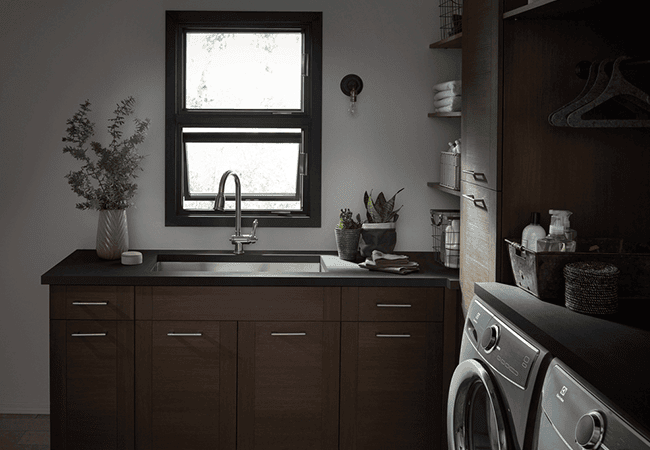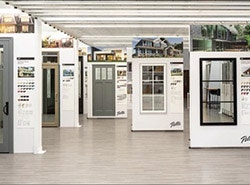What to Know about Different Types of Window Screens
Create a fresh, open-air environment while keeping bugs out with a window screen that is designed to make your life easier.

KEY TAKEAWAYS
- Window screens are essential for letting fresh air in while keeping bugs out, and they can help reduce air conditioning costs by improving natural airflow.
- There are various types of screens, including traditional flat screens and innovative retractable screens that disappear when not in use, offering more natural light and unobstructed views.
- Screen placement and size vary by window type—some require full screens, others half, and their location (interior or exterior) depends on how the window operates.
For anyone with an operable window, a properly functioning screen is important for keeping bugs and pests out. The origins of the window screen go back nearly 200 years when a "wove wire for window screens" was mentioned in American Farmer. Window screen technology, and therefore, quality, have improved dramatically since then, but the primary functions of this everyday item remain the same — let fresh air in while keeping bugs and pests out.
We’ve sharing a few things to know about window screens that will have you enjoying the sounds, sights and smells of pleasant weather in no time.
Types of Window Screens
One of the easiest ways to enjoy a breezy, bug-free summer is to have window screens installed throughout your home. Screens not only impact a room’s natural light and view, but they also enhance your living experience by creating a fresh, open-air environment. Adding screens to your windows helps improve natural air flow when the windows are open and often leads to less air conditioning costs for your home. Let’s discuss the different types of screens available, including flat and retractable screens.
Flat Window Screens
The most common type of window screen is a flat screen, which is always visible unless removed for seasonal storage. At Pella, we call this type the InView™ screen. This high-transparency screen still provides a clear view, letting in more air and 14% more light than conventional fiberglass screens.4
Retractable Window Screens
Retractable screens appear when you need them and neatly hide away when you don’t. The self-storing design enables unobstructed views when not in use. This results in a sleek look that welcomes more natural sunlight. When the screen is needed, it easily engages to keep bugs out so you can enjoy fresh air in the house. Retractable screens are especially convenient as they do not require seasonal storage or as much cleaning as traditional visible screens. Pella offers three industry-leading types of retractable screens: the Hidden Screen for vinyl windows, the Integrated Rolscreen® for Pella® Reserve™ - Traditional single-hung and double-hung windows and the Rolscreen® Retractable Screen for wood windows.
The Hidden Screen is Pella’s latest screen innovation, available on Pella® 250 Series single-hung, double-hung and sliding windows. It’s easy to use, appearing when you open the window and neatly folding away when the window is closed. This screen allows 44% more natural light in your home when a window is closed than a standard screen.44

The Integrated Rolscreen appears when you open the window and disappears into the frame when the window is closed. No seasonal screen storage is required, as the Integrated Rolscreen retracts back into the frame, out of sight, when the window is closed. The screen is attached to the sash with magnets. If you choose to open the window and wish to not have the screen, simply tilt the sash, like you do for cleaning, and the screen disengages and retracts back into the sill (or head on the top sash).
The Rolscreen rolls up and down like a shade. Rather than storing in the window frame like the Integrated Rolscreen, this screen is stored outside of the frame. This option features a high-transparency screen material as standard. It’s available on select wood windows including Reserve - Traditional monumental hung windows, Architect Series® - Traditional casement windows and Pella® Lifestyle Series awning and casement windows.
Half vs. Full Screens
Depending on the type of window you have, a full screen may not be necessary. For instance, single-hung and sliding windows use a half screen, since the window only glides open on one end, overlapping the glass on the other end. Other windows, like double-hung, casement and awning windows, require a full screen since the entire opening operates to let in fresh air.
Interior vs. Exterior Window Screens
Another thing to know about screens is that the placement changes based on window type. For instance, screens are on the interior side of casement and awning windows since these windows open outward. Interior screens do not interfere with the hardware on casement and awning windows, and they are protected from the elements, keeping the screen cleaner. Other types of windows, like single-hung, double-hung and sliding windows, have screens on the exterior side. This option protects the screen from pets and little hands in the house.
Window Screen Replacement
The right window screen can help improve the light and airflow in your home and even help cut energy costs. Whether you’re looking to entirely replace your windows or simply looking for a replacement window screen, shop the options online or connect with a Pella expert near you.

